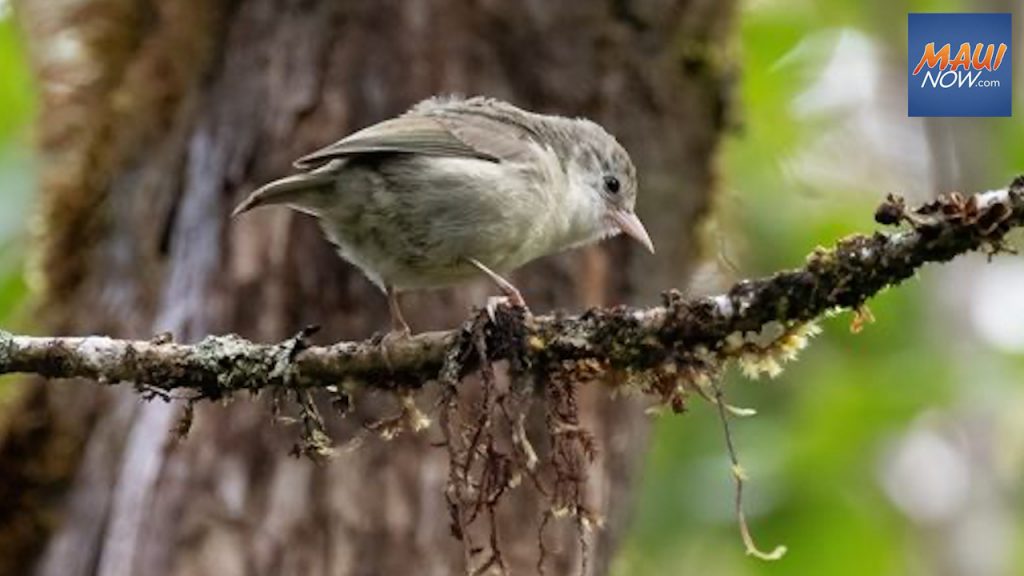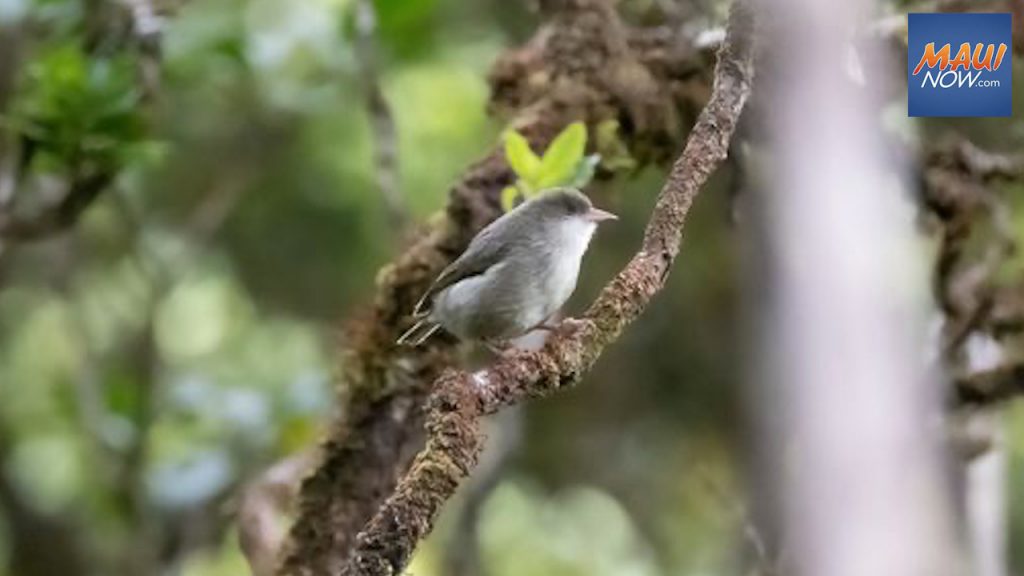DLNR: only five ʻAkikiki left, chances of survival are slim
Only five of the native Hawaiian honeycreeper species, ʻakikiki, are left in the wild and chances of saving them are growing increasingly dire by the day, according to state officials. This revelation was shared by Justin Hite of the Kauaʻi Forest Bird Recovery Project during a community open house Tuesday evening.
“We have suspended any attempts at bringing the last five of these birds into safety, as they are molting currently and capturing them is too stressful and would likely lead to their demise,” Hite, KFBRP’s field supervisor explained.

Efforts to collect unhatched eggs from tiny nests high in the forest canopy have been much more successful, as 11 of 12 eggs hatched, and baby chicks are now in bird conservation centers on Kaua‘i and Maui, managed by the San Diego Zoo Wildlife Alliance.
They’ve joined other ‘akikiki who will be raised in safe keeping until the threat of avian malaria is eliminated in the wild, according to a DLNR news release. For Hite, and dozens of others working to save three species of honeycreepers from sure extinction, it’s a foregone conclusion, but depressing, nonetheless.

“The ray of hope is the planned implementation of what is known as IIT, or incompatible insect technique,” according to a DLNR news release.
During Tuesday’s open house to provide information and gather input for an Environmental Assessment for the Kauaʻi IIT project, DLNR Division of Forestry and Wildlife Administrator David Smith detailed the project, pending regulatory approvals, proposed to begin this fall on Kaua‘i.

“We have about three species that are just critical at this point. They’re right on the verge of extinction. Literally, some of these species like ʻakikiki and ‘akeke’e’ on Kaua‘i and kiwikiu on Maui could go extinct within months… They’ve reached the end of the slippery slope they’ve been on for decades. With temperatures increasing and the mosquitos getting further up into the mountains and bringing the deadly avian malaria with them, they’re just decimating these populations.”
IIT involves releasing incompatible male mosquitoes that have a strain of a naturally occurring bacteria (Wolbachia) that is different than the strain in female mosquitoes, which results in female mosquitoes not having viable eggs and offspring.
A hearing on a preliminary injunction and TRO to stop the project is scheduled in O‘ahu Circuit Court on July 21.
While predation and habitat loss have contributed to the extinction of other native bird species, it is avian malaria that has been killing birds in recent years, as mosquitoes move higher into the mountain habitats of the birds, to escape warmer temperatures, according to DLNR.
Smith concluded, “These birds are very charismatic. They’re very emblematic of the native ecosystems here in Hawaiʻi. They dwell in the Wao Akua, the Realm of the Gods. That’s where they are found and they’re really an important part of our native biodiversity. I think people really understand that and have an affinity for them, and they understand that what we’re trying to do is really important.”
















